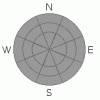SPECIAL ANNOUNCEMENT |
 |
First of all, I want to thank everyone who helped make this advisory program possible this winter. With a cutback in funding it took a community effort to help keep riders safe and I deeply appreciate everyone that stepped up to the plate. In particular, many thanks to Sterling along with the great staff at Big Pine Sports in Fairview, in partnership with Arctic Cat, for generously providing a loaner sled to the Avalanche Center. Without this machine, we would not be able to see enough terrain to develop an accurate forecast. In addition, many thanks to the Beck brothers and Snowbigdeal.com for helping to co-ordinate and sponsor our first annual Skyline avalanche fundraiser, and for all their awesome contributions to avalanche safety in Utah.
I also want to thank everyone for all their great observations. In particular, many thanks to Steve Cote and Darce Trotter for all their informative trip reports, weather and avalanche observations, and videos. You guys really stepped it up this winter and helped keep riders safe on the Skyline. Thanks for taking so much ownership of this program and giving back so much to the community… y’all rock! In addition, I want to thank Sean and Mollie Busby, Seth Wallace, Matt Selman, Jed Hancock and Alex Zipperer for all their great contributions.
And finally, a huge shout out to my partner in crime Trent Meisenheimer who made many personal sacrifices in order to help with field days, education and outreach, and avalanche research on the Skyline. I couldn’t have pulled off forecasting for both the Skyline and western Uinta’s without Trent’s enormous dedication and of course, I also appreciate the many Red Bulls we shared. Thanks man! |
|
|
CURRENT CONDITIONS |

|
Observations from the range can be found here. |
|
|
RECENT ACTIVITY |

|
No new avalanche activity to report, but if we hear of any activity we'll update this page. |
|
|
THREAT #1 |
|
No problem identified.
|
| WHERE |
PROBABILITY |
SIZE |
TREND |

|
| No probability identified. |
|
|
|
|
|
Now on to snow… in general you can count on several types of avalanche conditions in the spring. Whenever we get a storm the avalanche danger will rise, as the new snow might not bond well to the existing hard, slick crust it falls on. As always, recent avalanche activity as well as cracking and collapsing of the snowpack are dead giveaways the snow is unstable. Even if these clues don’t present themselves, be sure to do some tests on smaller slopes that are similar in aspect, elevation and slope angle to what you want to ride on. Choose test slopes that have minimal consequences, especially after a significant snowfall. A well placed slope cut will give you a good feel for the stability of the slope. If there is much wind associated with the storm or if there is snow available for transport before it gets cooked into place, expect to find potentially unstable wind slabs on leeward slopes.
Also, when the sun first comes out and the snow goes through its initial rapid warm up, avalanches will be likely on steep slopes. You can expect the usual round of wet slides, but fortunately new snow instabilities tend to stabilize rather quickly in the spring due to the warm temperatures. When the snowpack goes several nights without a good solid refreeze, deep wet slab avalanches are possible, especially in steep, rocky terrain. Given this year’s unusually shallow snowpack, I’d expect to see large avalanches breaking to the ground. These will be tree snapping, bone shattering, sled crushing avalanches… you get the picture. During the heat of the day you’ll want to get off of and out from underneath steep slopes and avoid terrain traps such as gullies or steep road cuts where cement-like debris will pile up very deeply. |
|
|
GENERAL ANNOUNCEMENTS |
We are still interested in snow and avalanche information. If you’re getting out and about and trigger an avalanche or see anything interesting please drop me an email at craig@utahavalanchecenter.org or call 801-231-2170 Also, now is a great time to schedule one of our free avalanche awareness presentations for your group or club for next year. Email or call me and we’ll get you booked before things get too crazy.
This information does not apply to developed ski areas or highways where avalanche control is normally done. This advisory is from the U.S.D.A. Forest Service, which is solely responsible for its content. This advisory describes general avalanche conditions and local variations always occur.
This advisory provided by the USDA Forest Service, in partnership with:
The Friends of the Utah Avalanche Center, Utah Division of State Parks and Recreation, Utah Division of Emergency Management, Salt Lake County, Salt Lake Unified Fire Authority and the friends of the La Sal Avalanche Center. See ourSponsors Pagefor a complete list.
|
|
|
This information does not apply to developed ski areas or highways where avalanche control is normally done. This advisory is from the U.S.D.A. Forest Service, which is solely responsible for its content. This advisory describes general avalanche conditions and local variations always occur. |
|
This advisory provided by the USDA Forest Service, in partnership with:
The Friends of the Utah Avalanche Center, Utah Division of State Parks and Recreation, Utah Division of Emergency Management, Salt Lake County, Salt Lake Unified Fire Authority and the friends of the La Sal Avalanche Center. See our Sponsors Page for a complete list. |

